Comentarios / Preguntas (115)
![]() Aran escribió:
Aran escribió:
En que momento se unen los puntos? No lo especifica las instrucciones… cuando comienzo el cuello debo unirlo para que quede un cuello redondo? O en que momento? Se me hace difícil unirlo con 72 puntos pueden explicarlo?
14.07.2024 - 17:29DROPS Design respondió:
Hola Aran, la labor se trabaja en redondo, con una aguja circular corta y una aguja circular larga para el canesú y el cuerpo. Como puede ser incómodo unir los 72 puntos con una aguja circular larga, se recomienda usar una corta en el cuello, para que sea más fácil unir. En caso contrario, puedes montar con agujas de doble punta o con la técnica anillo mágico para hacer la unión de forma más sencilla. La unión se hace desde el principio, la 1ª vuelta del cuello.
21.07.2024 - 17:30
![]() Susu escribió:
Susu escribió:
Para la talla L, los puntos iniciales en el cuello son de 72 pts? y debo aumentar en 24 pts. Cómo se van distribuyendo los aumentos en este tejido?
13.07.2024 - 19:01DROPS Design respondió:
Hola Susu, sí, para la talla L comienzas con 72 pts. Trabajas 4 cm del elástico y luego, en 1 vuelta de derecho, aumentas 24 puntos (en la misma vuelta todos). Reparte estos puntos según el TIP PARA LOS AUMENTOS (repartidos). Como tienes 72 puntos iniciales, aumenta 1 punto después de cada 3º pt.
21.07.2024 - 17:33
![]() Angelique Fourie escribió:
Angelique Fourie escribió:
In diagram A.2., do i start at the bottom of the diagram? What do i do with the blank spaces? Do i just carry on to the next small square?
03.07.2024 - 13:20DROPS Design respondió:
Dar Mrs Fourie, just skip the white spaces, they are there for technical reasons, as new stitches will be increased afterwards, so first row in A.2 is worked and repeat over 10 sts. Happy knitting!
03.07.2024 - 15:56
![]() Martine Josien escribió:
Martine Josien escribió:
Je ne parviens pas à faire 7 motifs de 10 mailles sur A2 on a bien 70 mailles,mais le motif en fait 14
28.06.2024 - 17:37DROPS Design respondió:
Bonjour MmeJosien, le diagramme A.2 se tricote au 1er rang sur 10 mailles: 3 m end + 5 m end + 2 m end, les espaces ente ces groupes de mailles correspondent aux augmentations qui seront faites par la suite, on garde ainsi les 3 premières et les 3 dernière mailles alignées. Bon tricot!
01.07.2024 - 07:59
![]() Angelique Fourie escribió:
Angelique Fourie escribió:
This pattern does not give bust measurement for the sizes. Also no positive ease for the sizes. I wanted to start already but dont know what size to do. Please help.
19.06.2024 - 22:12DROPS Design respondió:
Dear Angelique, we suggest that you take a garment that is a similar style and fits the intended wearer, and compare the measurements to those given on the shcematic drawing at the bottom of the pattern- Happy Knitting!
20.06.2024 - 00:11
![]() Sansregret, Sylvie escribió:
Sansregret, Sylvie escribió:
Bonjour, dans vos patrons est- ce que l'aisance est inclus dans le nombre de mailles. MERCI
10.05.2024 - 22:19DROPS Design respondió:
Bonjour Mme Sansregret, nous ne travaillons pas avec le concept d'aisance, pour trouver votre taille, mesurez un vêtement similaire que vous avez et dont vous aimez la forme et comparez ces mesures à celles du schéma pour trouver la taille adéquate et l'aisance souhaitée. Retrouvez plus d'infos ici. Bon tricot!
13.05.2024 - 07:19
![]() Jette Lovise Tonset escribió:
Jette Lovise Tonset escribió:
Hvordan kan jeg snu bladmønster et, så jeg kan strikke nedenfra og opp?
30.04.2024 - 18:41DROPS Design respondió:
Hej Jette, det er meget lettere at strikke ovenfra og ned istedet for at du skal snu diagrammet :)
03.05.2024 - 11:11
![]() Brunhilde escribió:
Brunhilde escribió:
I am battling with row 15 to 17 on pattern A2 - please could you email me the correct diagram, as mention red on the instructions
22.03.2024 - 19:00DROPS Design respondió:
Dear Brunhilde, the diagrams were corrected, the correct diagram is now on the page, below the instructions. Happy Knitting!
23.03.2024 - 22:58
![]() BIRGITTE escribió:
BIRGITTE escribió:
Hvorfor er nogle farver væsentligt tykkere end andre? Lige nu har jeg en koksgrå Nepal som sagtens kunne strikkes på pind 4 og så har jeg en lysegul Nepal som burde strikkes på pind 6. Hvorfor???
13.03.2024 - 16:41DROPS Design respondió:
Hej Birgitte, det skal de ikke være. Alle DROPS Nepal farver skal være nogenlunde lige tykke +/- 5% . Tag kontakt med din butik hvor du har købt garnet, hvis der er noget galt med garnet.
19.03.2024 - 11:30
![]() Sophia escribió:
Sophia escribió:
Jeg er lidt ny inden for strik, så bær over med mig :) Når man skal lave strikkeprøve står der "glatstrik og mønsterstrik". Hvad er det for et mønster man skal følge? Et af diagrammerne? Kh Sophia
13.03.2024 - 08:56DROPS Design respondió:
Hei Sophia. Her er det diagram A.2 som er mønseret (mønsterstrikk) på denne genseren og i A.2 strikkes det både mønster og glattstrikk. mvh DROPS Design
18.03.2024 - 14:00
Autumn Wreath#autumnwreathsweater |
|||||||||||||||||||||||||
 |
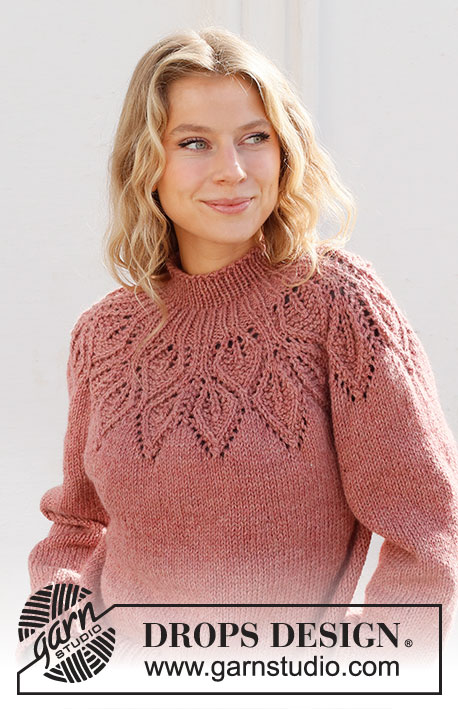 |
||||||||||||||||||||||||
Jersey a punto en DROPS Nepal. La labor está realizada de arriba abajo con el canesú redondo y el patrón de hojas. Tallas: S - XXXL
DROPS 228-1 |
|||||||||||||||||||||||||
|
EXPLICACIONES PARA REALIZAR LA LABOR: ------------------------------------------------------- PATRÓN: Ver los diagramas A.1 y A.2 TIP PARA LOS AUMENTOS (repartidos): Para calcular cómo aumentar puntos repartidos, usar el número total de puntos en la aguja (p.e. 64 puntos) y dividir los puntos entre el número de aumentos a trabajar (p.e.20) = 3.2 En este ejemplo, aumentar haciendo 1 hebra después daprox. cada 3º punto. TIP PARA LAS DISMINUCIONES (aplicar a las mangas): Disminuir 1 punto a cada lado del marcapuntos como sigue: Trabajar hasta que queden 3 puntos antes del marcapuntos y trabajar 2 puntos juntos de derecho, 2 derechos (el marcapuntos se encuentra entre estos puntos), deslizar 1 punto como de derecho, 1 derecho, pasar el punto deslizado sobre el punto trabajado (2 puntos disminuidos) TIP PARA EL REMATE: Para evitar que el borde de remate quede tenso al cerrar, se puede usar una aguja más grande. Si sigue demasiado tenso, hacer 1 hebra después de aprox. cada 6º punto y al mismo tiempo cerrar (las hebras se cierran como puntos normales). ------------------------------------------------------- COMENZAR LA LABOR AQUÍ: ------------------------------------------------------- JERSEY - RESUMEN DE LA LABOR: El cuello y el canesú se trabajan en redondo con una aguja circular, desde el centro de la espalda y de arriba abajo. El canesú se divide para el cuerpo y las mangas y el cuerpo se continua en redondo con una aguja circular. Las mangas se trabajan en redondo con agujas de doble punta/una aguja circular corta, de arriba abajo. CUELLO: Montar 64-68-72-76-80-84 puntos con una aguja circular corta de 4.5 mm y en DROPS Nepal. Trabajar 1 vuelta de derecho, después trabajar el elástico (1 derecho, 1 revés) 4 cm. Trabajar 1 vuelta de derecho y al mismo tiempo aumentar 20-28-24-32-28-36 puntos repartidos – leer TIP PARA LOS AUMENTOS = 84-96-96-108-108-120 puntos. Insertar 1 marcapuntos en la vuelta; el canesú se mide desde este marcapuntos. CANESÚ: Trabajar A.1A sobre todos los puntos (= 7-8-8-9-9-10 repeticiones de 12 puntos) 4 cm, después trabajar A.1B (= 2 vueltas). Ahora hay 70-80-80-90-90-100 puntos. Cambiar a una aguja circular de 5.5 mm. Ahora trabajar A.2 sobre A.1 (= 7-8-8-9-9-10 repeticiones de 10 puntos). RECORDAR MANTENER LA MISMA TENSIÓN DEL TEJIDO. Cuando se haya completado A.2 en vertical hay 196-224-224-252-252-280 puntos y la labor mide aprox. 20 cm desde el marcapuntos. Trabajar 1 vuelta de derecho y al mismo tiempo aumentar 18-11-27-27-47-42 puntos repartidos = 214-235-251-279-299-322 puntos. Continuar con punto jersey hasta que la labor mida 22-22-23-25-27-29 cm. En la siguiente vuelta dividir para el cuerpo y las mangas como sigue: Trabajar los primeros 30-33-35-39-43-48 puntos (= mitad de la espalda), deslizar los siguientes 46-50-54-60-62-64 puntos en 1 gancho auxiliar para la manga, montar 8-8-10-10-12-12 puntos (= en el lado bajo la manga), trabajar los siguientes 62-69-73-81-89-98 puntos (= delantero), deslizar los siguientes 46-50-54-60-62-64 puntos a 1 gancho auxiliar para la manga, montar 8-8-10-10-12-12 puntos (= en el lado bajo la manga), trabajar los últimos 30-33-35-39-43-48 puntos (= mitad de la espalda). El cuerpo y las mangas se finalizan por separado. AHORA MEDIR LA LABOR DESDE AQUÍ! CUERPO: = 138-151-163-179-199-218 puntos. Continuar con punto jersey en redondo hasta que la labor mida 20-22-23-23-23-23 cm. Quedan 10 cm hasta las medidas finales: probarse el jersey y trabajar hasta el largo deseado. Para evitar que el elástico que se trabaja a continuación quede tenso, trabajar 1 vuelta de derecho y al mismo tiempo aumentar 24-26-29-31-35-37 puntos repartidos = 162-177-192-210-234-255 puntos. Cambiar a una aguja circular de 4.5 mm y trabajar el elástico (1 derecho, 2 reveses) 10 cm. Cerrar con derecho sobre derecho y revés sobre revés - leer TIP PARA EL REMATE. El jersey mide aprox. 56-58-60-62-64-66 cm desde el hombro hacia abajo. MANGAS: Deslizar los 46-50-54-60-62-64 puntos desde el gancho auxiliar a un lado de la labor con una aguja circular corta / agujas de doble punta de 5.5 mm y recoger 1 punto en cada uno de los 8-8-10-10-12-12 puntos nuevos montados bajo la manga = 54-58-64-70-74-76 puntos. Insertar un marcapuntos en el centro de los puntos nuevos bajo la manga y comenzar la vuelta en el marcapuntos. Trabajar en punto jersey en redondo 4 cm, después disminuir 1 punto a cada lado del marcapuntos - leer TIP PARA LAS DISMINUCIONES. Disminuir de esta manera cada 3½-3-2-1½-1½-1 cm un total de 8-9-11-13-15-15 veces = 38-40-42-44-44-46 puntos. Continuar en punto jersey hasta que la manga mida 31-30-30-28-26-24 cm. NOTA :Las medidas son más cortas en las tallas más grandes debido a la mayor anchura del escote y mayor largura del canesú. Aumentar 4-5-6-7-7-8 puntos repartidos = 42-45-48-51-51-54 puntos. Cambiar a agujas de doble punta de 4.5 mm y trabajar el elástico (1 derecho, 2 reveses) 10 cm. Cerrar con derecho sobre derecho y revés sobre revés - recordar TIP PARA EL REMATE. La manga mide aprox. 41-40-40-38-36-34 cm desde la división. Trabajar la otra manga de la misma manera. |
|||||||||||||||||||||||||
Explicaciones del diagrama |
|||||||||||||||||||||||||
|
|||||||||||||||||||||||||
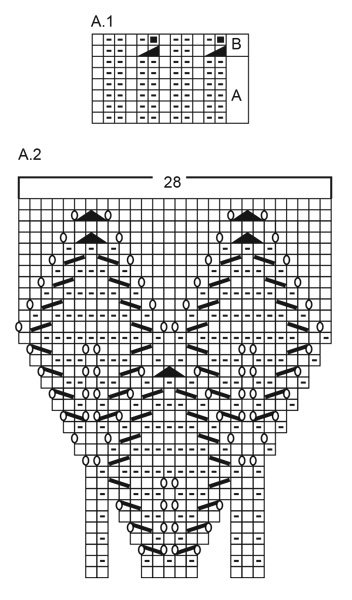 |
|||||||||||||||||||||||||
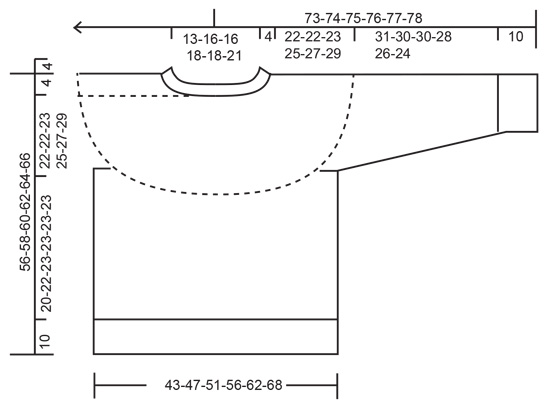 |
|||||||||||||||||||||||||
¿Terminaste este patrón?Entonces, etiqueta tus fotos con #dropspattern #autumnwreathsweater o envíalas a la galería #dropsfan. ¿Necesitas ayuda con este patrón?Encontrarás 27 videos tutoriales, un espacio para comentarios/preguntas y más visitando la página del patrón en garnstudio.com © 1982-2025 DROPS Design A/S. Todos los derechos reservados. Este documento, incluyendo todas sus sub-secciones, está protegido por los derechos de autor (copyright). Lee más acerca de lo que puedes hacer con nuestros patrones en la parte de abajo de cada patrón de nuestro sitio. |
|||||||||||||||||||||||||







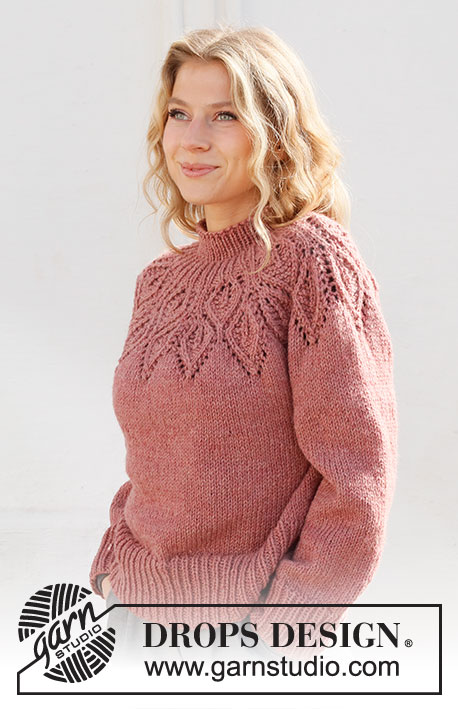
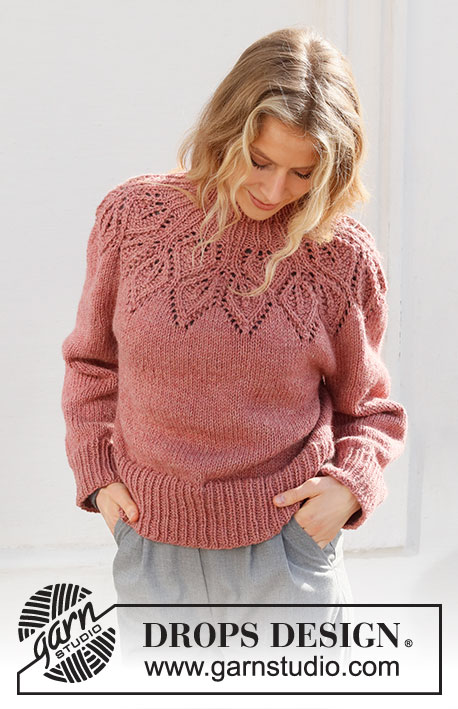
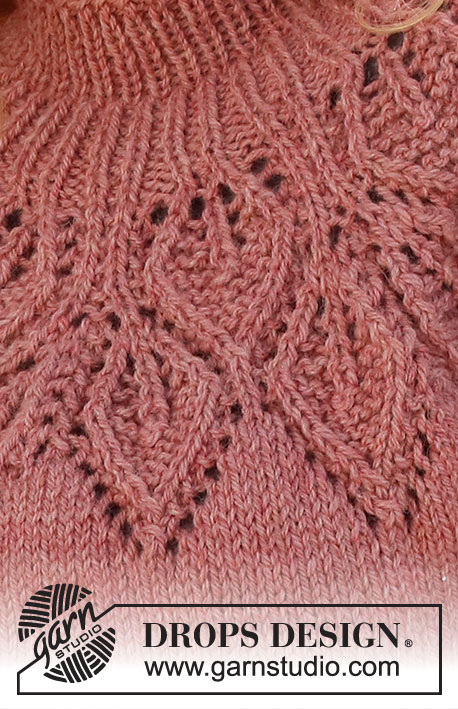

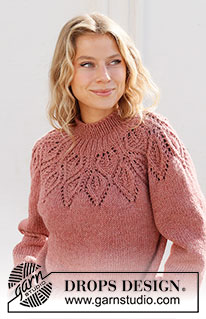
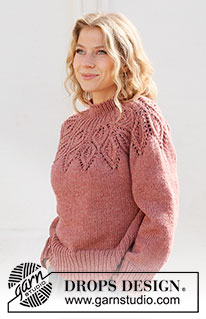
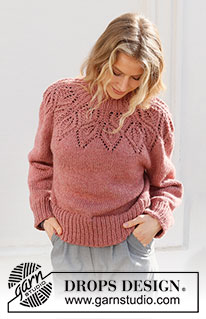

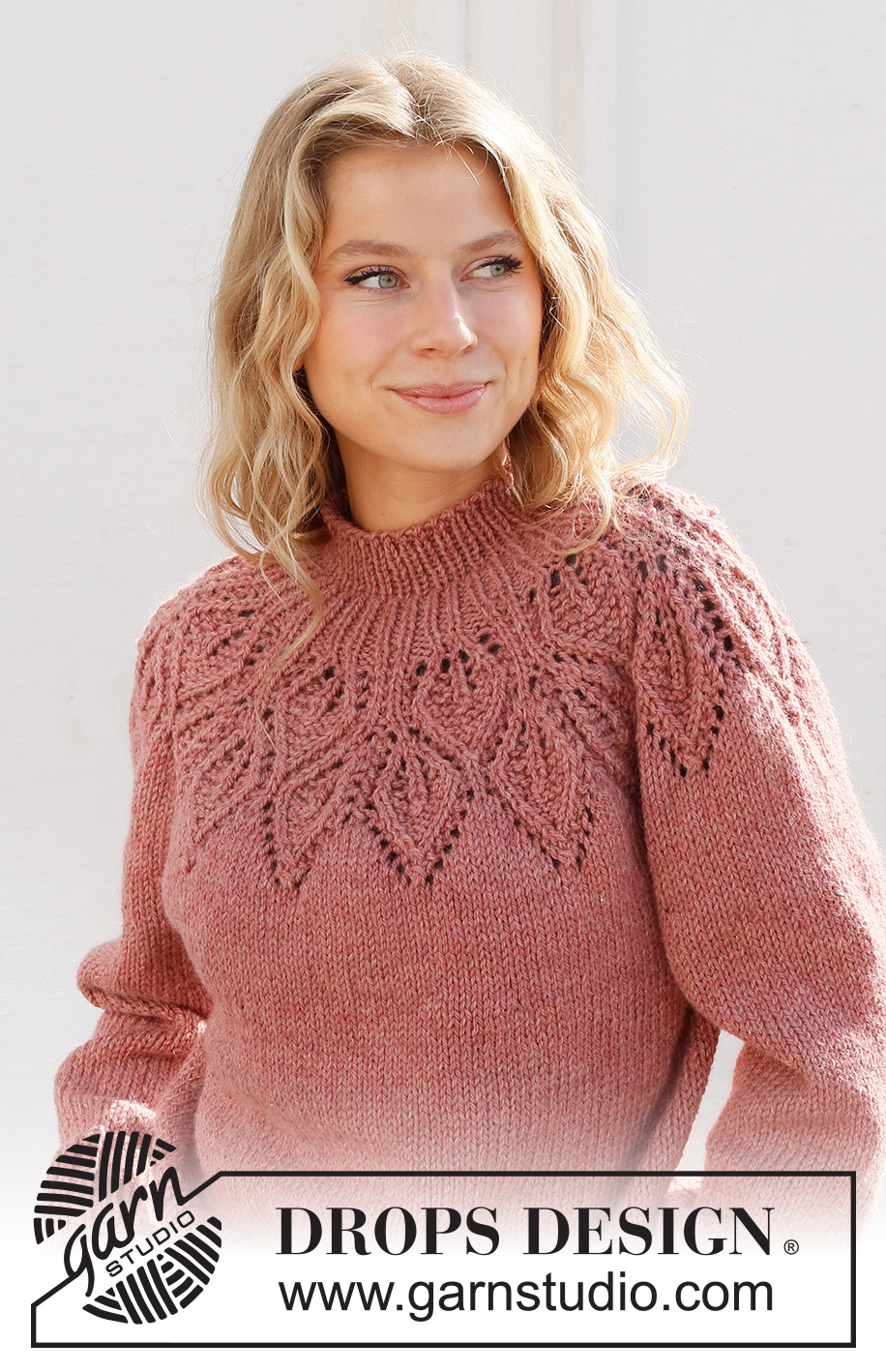
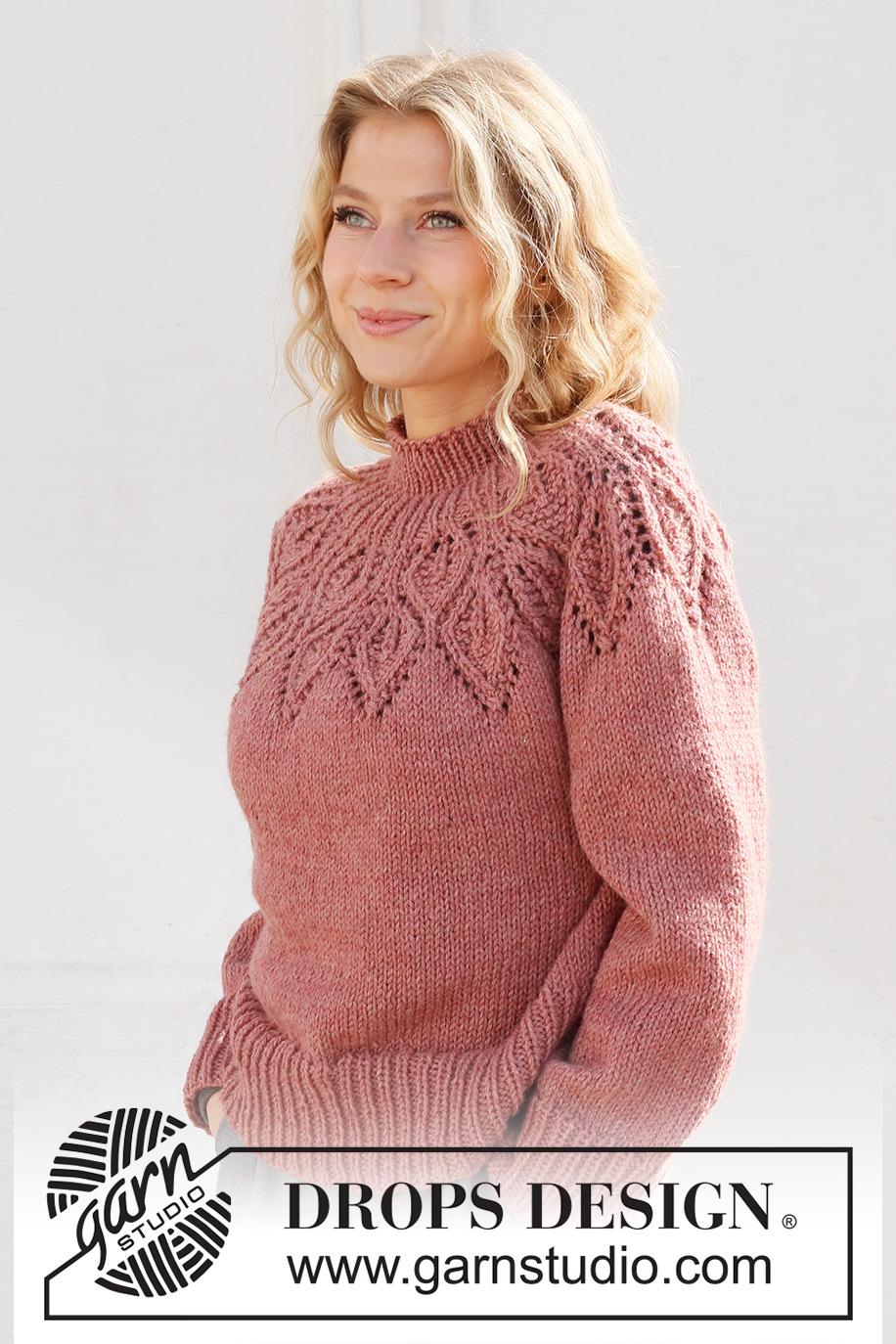
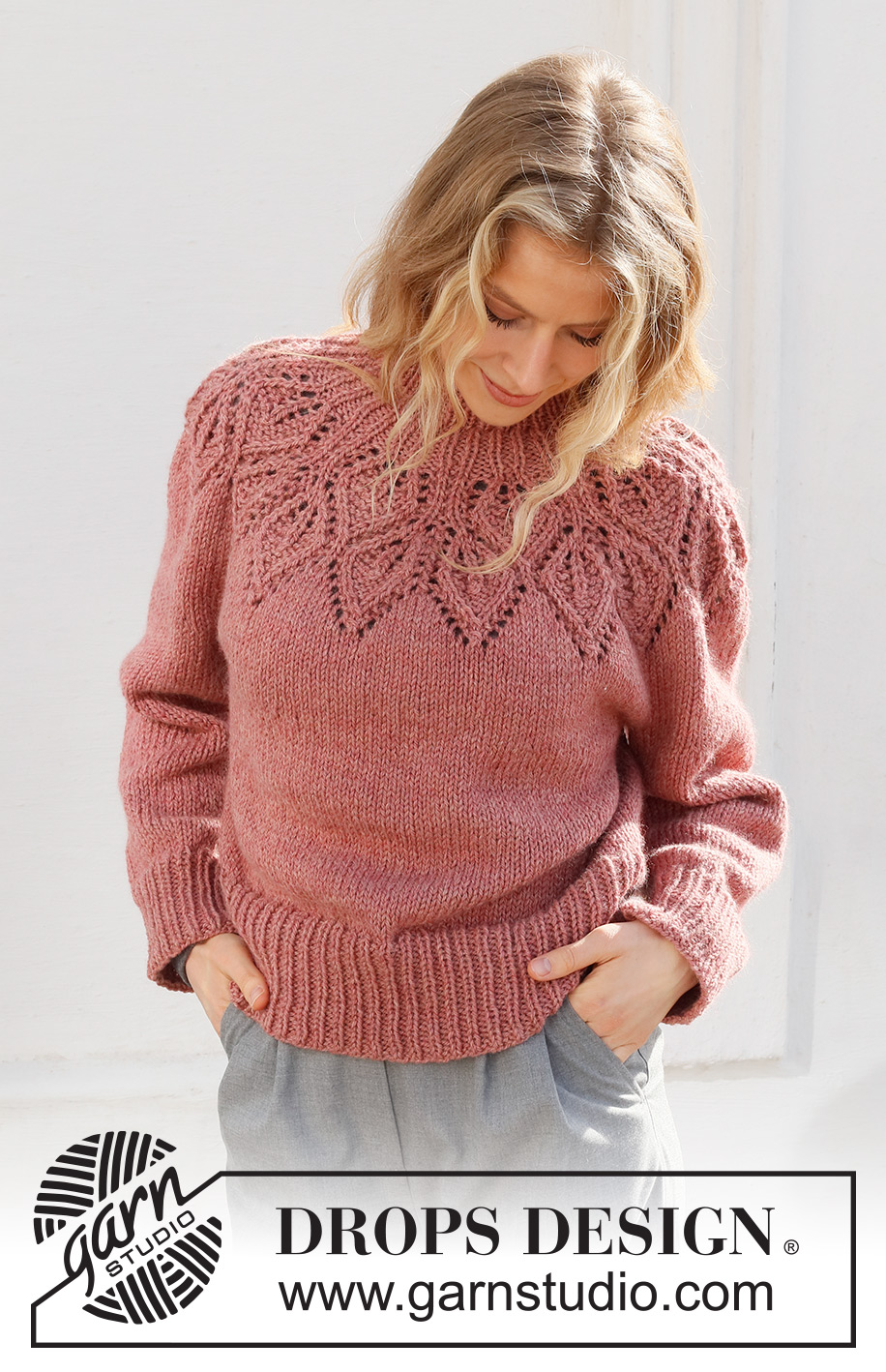

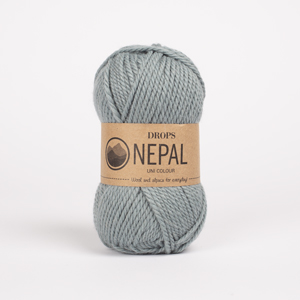
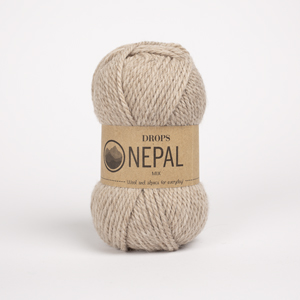

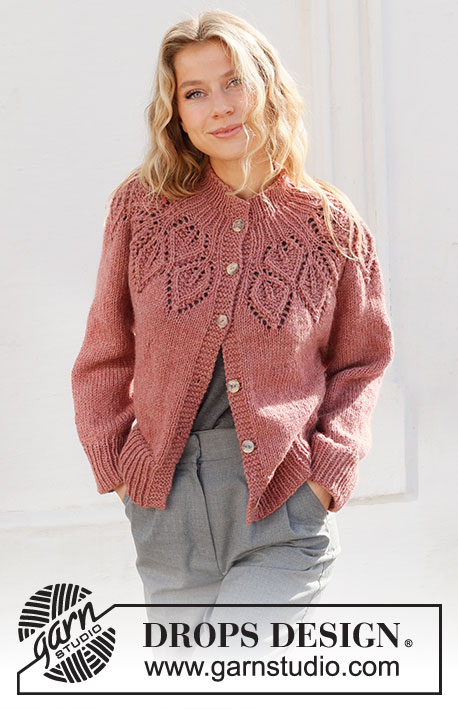


















































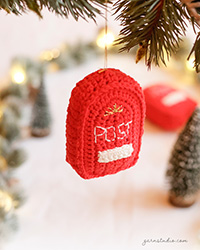
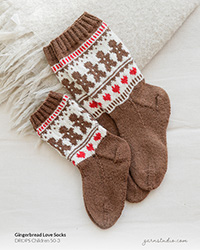
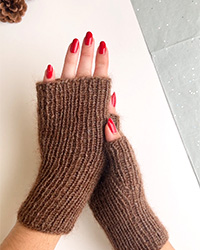
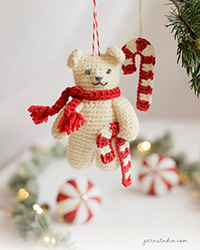
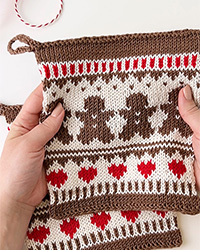
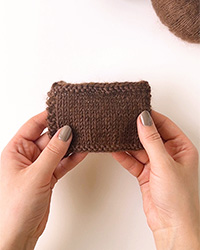
Escribe un comentario sobre DROPS 228-1
¡Nos encantaría saber qué piensas acerca de este patrón!
Si quieres escribir una pregunta referente al patrón, por favor asegúrate de elegir la categoría correcta en el formulario debajo, para acelerar el proceso de respuesta. Los campos obligatorios están marcados con un *.